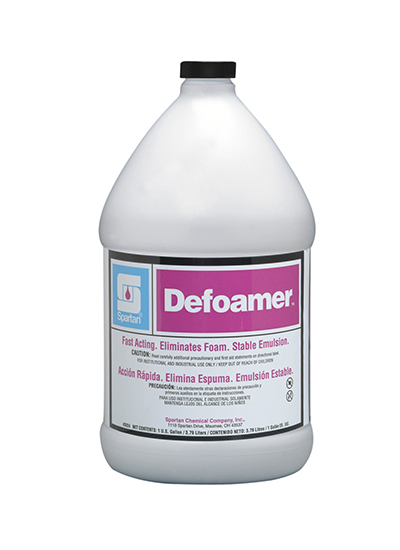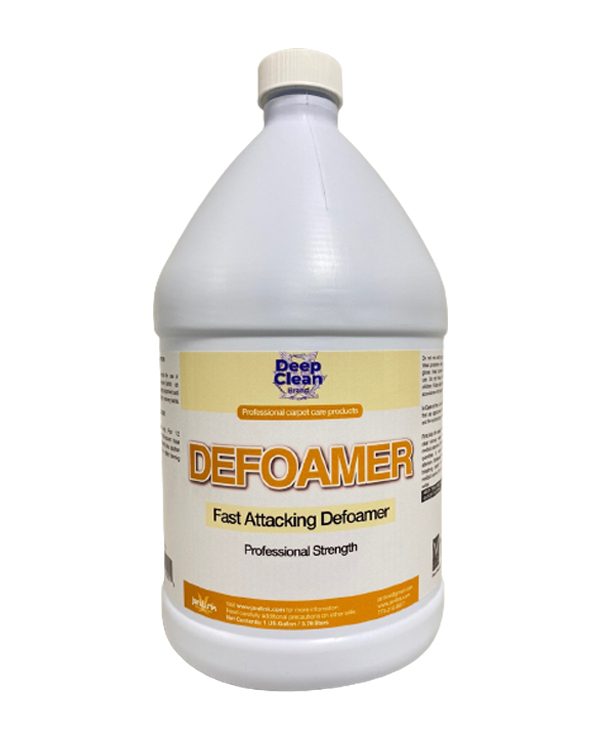A Detailed Guide to Selecting the Best Chemical Defoamer for Your Needs
A Detailed Guide to Selecting the Best Chemical Defoamer for Your Needs
Blog Article
Recognizing Just How a Chemical Defoamer Works to Enhance Industrial Processes
Chemical defoamers play a crucial role in maximizing commercial procedures by efficiently alleviating foam-related challenges. What remains to be explored is how these defoamers can be customized to satisfy details operational demands.
What Is a Chemical Defoamer?
A chemical defoamer is a material particularly created to decrease or get rid of the development of foam in various industrial procedures. Lathering can interfere with manufacturing efficiency, impacting the quality and performance of products in fields such as food and beverage, pharmaceuticals, and wastewater treatment. Defoamers are essential in these applications, as excessive foam can lead to functional difficulties, such as overflow, decreased blending effectiveness, and prevented warmth transfer.
The choice of a proper defoamer is crucial, as different formulations may be customized for particular procedures or kinds of foam. Elements such as compatibility with other components, temperature security, and the intended application play a significant duty in the effectiveness of a defoamer.
Systems of Defoaming Activity
The systems of defoaming activity include complicated communications in between the defoamer and the foam structure. When a defoamer is introduced to a lathering system, it migrates swiftly to the surface of the foam bubbles, displacing the stabilizing representatives that contribute to foam stability.
As smaller bubbles merge right into larger ones, the total stability of the foam reduces. In addition, particular defoamers may have hydrophobic components that boost their capacity to destabilize the foam by creating an obstacle that inhibits bubble formation. This double activity-- surface area stress reduction and destabilization-- enables a much more efficient failure of foam.

Furthermore, the viscosity and spreading features of the defoamer play critical duties in its performance. A well-formulated defoamer will guarantee rapid movement and ideal efficiency, decreasing foam formation during industrial procedures. By understanding these systems, industries can much better select and use chemical defoamers to improve operational effectiveness and product quality.
Kinds Of Chemical Defoamers
Chemical defoamers can be classified into a number of types, each customized to certain applications and foam challenges. The primary classifications consist of silicone-based, non-silicone-based, and powder defoamers.
Silicone-based defoamers are very reliable due to their capability to spread out swiftly across fluid surface areas. Non-silicone-based defoamers, on the various other hand, usually rely on natural compounds Click This Link like fatty acids or esters.
Powder defoamers are composed of solid fragments that can be included to completely dry processes or solutions. They are frequently used in processes where liquid defoamers might not be reliable, providing a special option for details applications, such as in the production of specific kinds of plastics or powders.
In addition, each kind of defoamer can be personalized with various additives to improve efficiency, such as emulsifiers or surfactants, permitting versatility in dealing with various foaming scenarios throughout multiple sectors.
Applications in Industrial Processes

In the food and beverage sector, defoamers are critical during the manufacturing of juices, beers, and dairy items, where too much foam can prevent blending and purification procedures. By lowering foam development, defoamers help preserve constant item high quality and enhance processing times.
In pharmaceuticals, the existence of foam throughout the blending and formula of medicines can impact dose precision and item security. Defoamers guarantee smooth procedures, thereby helping with the production of premium drugs.
Wastewater therapy centers also rely upon defoamers to regulate foaming in aeration click reference storage tanks, which can or else minimize treatment efficiency and complicate sludge handling. By effectively managing foam, these chemicals boost the overall efficiency of treatment processes and contribute to governing conformity.

Benefits of Using Defoamers
While foam can offer significant difficulties across various industries, making use of defoamers uses many advantages that enhance operational effectiveness and item stability. Defoamers efficiently get rid of or reduce foam development, resulting in smoother manufacturing processes and enhanced product high quality. This decrease in foam lessens interruptions throughout manufacturing, enabling continual operation and boosted throughput.
Furthermore, the application of defoamers can result in cost savings by decreasing the demand for excess basic materials and energy intake connected with foam administration. By optimizing the manufacturing procedure, makers can attain greater returns and reduced waste, inevitably enhancing profitability.
Furthermore, defoamers add to far better devices performance. Foam buildup can result in obstructing, overflow, and tools wear, causing pricey downtime and upkeep. By protecting against these concerns, defoamers expand the lifespan of equipment and lower functional costs.
Conclusion

A chemical defoamer is a substance particularly developed to eliminate the development or reduce of foam in various commercial procedures. When a defoamer is presented to a lathering system, it moves swiftly to the surface area of the foam bubbles, displacing the stabilizing representatives that add to foam security. A well-formulated defoamer will make certain rapid migration and ideal efficiency, lessening foam development throughout industrial processes. Defoamers effectively minimize or remove foam development, leading to smoother production processes and improved item top quality.In final thought, chemical defoamers play a vital role in boosting commercial processes by properly reducing foam development.
Report this page